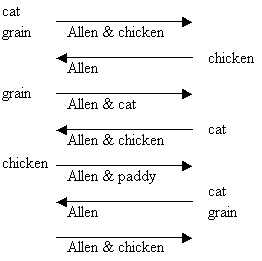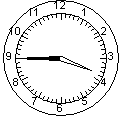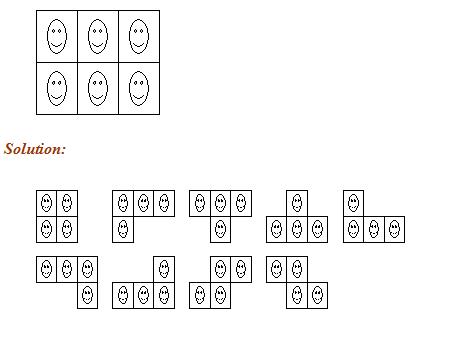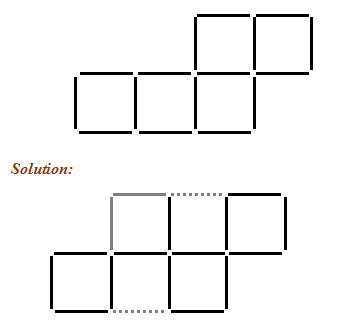

Problem Solving Techniques
Related Topics:
More Lessons for Arithmetic
Math Worksheets
The following are some examples of problem solving strategies.
Explore it//Act it/Try it (EAT) method (Basic)
Explore it//Act it/Try it (EAT) method (Intermediate)
Explore it//Act it/Try it (EAT) method (Advanced)
Finding a Pattern (Intermediate)
Explore It/Act It/Try It (EAT) Method (Intermediate)
In this lesson, we will look at some intermediate examples of the Explore it//Act it/Try it (EAT) method of problem solving strategy.
Example:
Allen has to ferry a cat, a chicken and a sack of grain across a river. His small boat is big enough to carry himself and only one of the three items at any one time. He must not leave the cat and the chicken alone or else the cat will attack the chicken. He also must not leave the chicken and the sack of grain alone or else the chicken will eat the grain. Find the least number of trips Allen needs to safely transport all the items to the other side of the river.
Solution:

Example:
Marcus bought two antique lamps for $50 each. Later he sold one for $60, but he changed his mind and bought it back for $70. Then he sold it again for $80. But since there was no one interested in the first lamp, he offered it for 10% less than its original cost, and finally managed to sell it. Did he make or lose money, and how much?
Solution:
All the ‘buy’ transactions: 2 × 50 + 70 = $170
All the ‘sell’ transactions: 60 + 80 + 45 = $185
Marcus made $15
Example:
Without moving 6 adjacent numbers on the face of a clock, rearrange the other six so that the sum of every pair of adjacent numbers is a prime number.

Solution:
11, 12, 1, 2, 3, 4 (not moved) followed by 9, 10, 7, 6, 5, 8
Example:
Julia bought a T-shirt that costs RM28 and paid for it exactly using 7 pieces of notes. What were the 7 pieces of notes that she used?
Solution:
10, 5, 5, 5, 1, 1, 1
10, 10, 2, 2, 2, 1, 1
5, 5, 5, 5, 5, 2, 1
Example:
Four stamps are to be torn from the sheet shown below. The four stamps must be intact so that each stamp is joined to another stamp along at least one edge. Find the possible patterns for these four stamps.

Example:
Yellow, white, green and red counters are arranged in a row. The red counter is to the left of the green counter and to the right of the yellow counter. The white counter is to the left of the green counter and not next to the yellow one. What are the colours of the counters in the row from left to right?
Solution:
Given: The red counter is to the left of the green counter and to the right of the yellow counter.
- Yellow counter is to the left of red counter
- Red counter is to the left of the green counter
Given: The white counter is to the left of the green counter and not next to the yellow one
- White counter is to the left of the green counter
- White counter is not next to the yellow counter
- White counter is between red counter and green counter.
So the order is: Yellow, Red, White and Green.
Example:
The figure below is arranged using 16 matchsticks to form 5 squares. Rearrange exactly 2 of the matchsticks to form 4 squares of the same size, without leaving any stray matchsticks.

Try the free Mathway calculator and
problem solver below to practice various math topics. Try the given examples, or type in your own
problem and check your answer with the step-by-step explanations.



We welcome your feedback, comments and questions about this site or page. Please submit your feedback or enquiries via our Feedback page.


